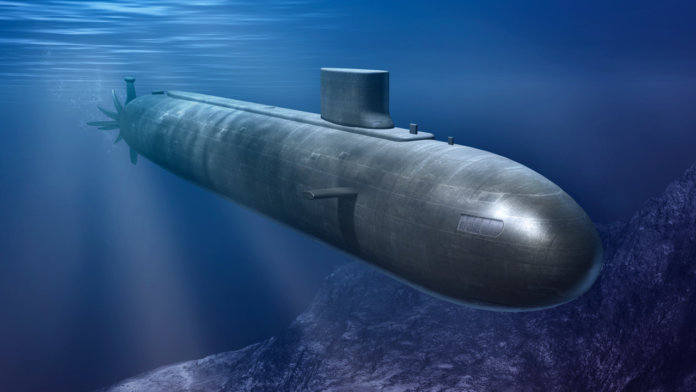The first nuclear submarine of its kind was launched in 1954. As a formidable weapon in the waters of the world's oceans, submarines pose a danger to humanity and their own crew. On July 1 this year, 14 military sailors were killed because of a fire on the Losharik deep-sea vehicle of the Ministry of Defense of the Russian Federation. In this regard, we decided to recall the 10 largest submarine accidents.
10.SS-109 (USS S-4), USA (1927)
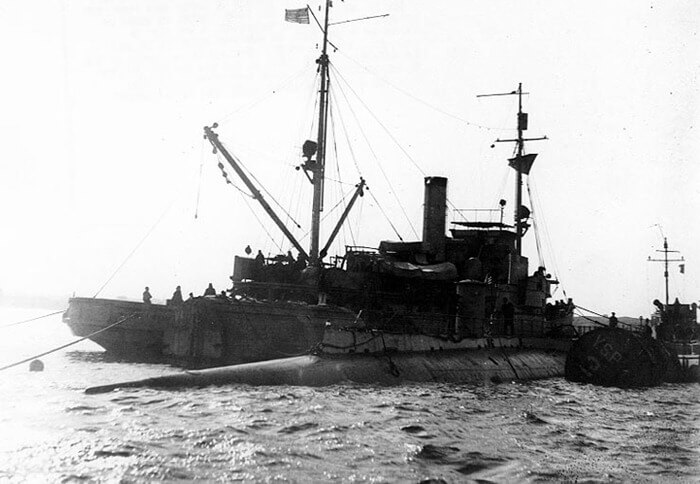 Until 1944, most of the submarine's service was carried out above the water and was diving only to attack or hide from the enemy. The American SS-109 sank off Cape Cod after being rammed by a Coast Guard ship. As a result, 40 soldiers were killed. Surprisingly, the boat returned to service a year after the accident and worked until it was decommissioned in 1936.
Until 1944, most of the submarine's service was carried out above the water and was diving only to attack or hide from the enemy. The American SS-109 sank off Cape Cod after being rammed by a Coast Guard ship. As a result, 40 soldiers were killed. Surprisingly, the boat returned to service a year after the accident and worked until it was decommissioned in 1936.
9. "Pike" S117, USSR (1952)
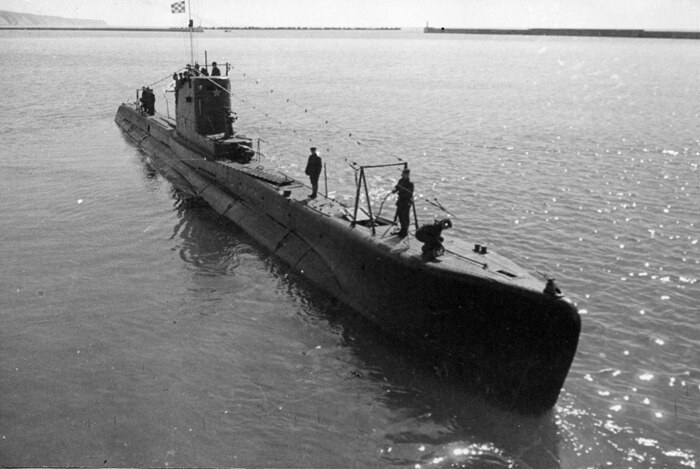
С117 - the progenitor of one of the largest submarines in the world... During the sinking of a Soviet diesel-electric submarine with torpedoes, 52 sailors went missing. The cause of the disaster and the place of the ship's death are not known to date. The incident happened in December 1952 while preparing for training exercises in the Sea of Japan.
Not reaching the site of the exercise, the C-117 commander reported that the right engine was faulty, so the combat unit went to the designated square on one diesel engine. After some time, the captain reported on the troubleshooting. After that, there was no more communication with the team. The search for "Pike", which was carried out until 1953, ended in nothing.
8. "Thresher" SSN-593, USA, (1963)
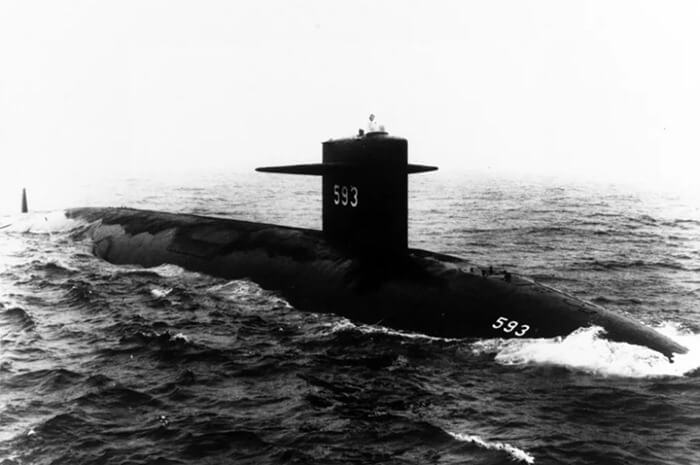 The wreck of an American nuclear submarine ship claimed 129 lives during an exercise off the coastline of Massachusetts (USA). SSN-593 went to sea to test the strength of the hull at extreme depths. Due to mechanical damage to the hull, the submarine hastily went to the bottom and exploded under water at around 732 meters. As shown by photographs from the accident site at a depth of 2.5 km, the explosion was strong and caused the scatter of large debris in a circle with a radius of 300 m.
The wreck of an American nuclear submarine ship claimed 129 lives during an exercise off the coastline of Massachusetts (USA). SSN-593 went to sea to test the strength of the hull at extreme depths. Due to mechanical damage to the hull, the submarine hastily went to the bottom and exploded under water at around 732 meters. As shown by photographs from the accident site at a depth of 2.5 km, the explosion was strong and caused the scatter of large debris in a circle with a radius of 300 m.
7.K129, USSR (1968)
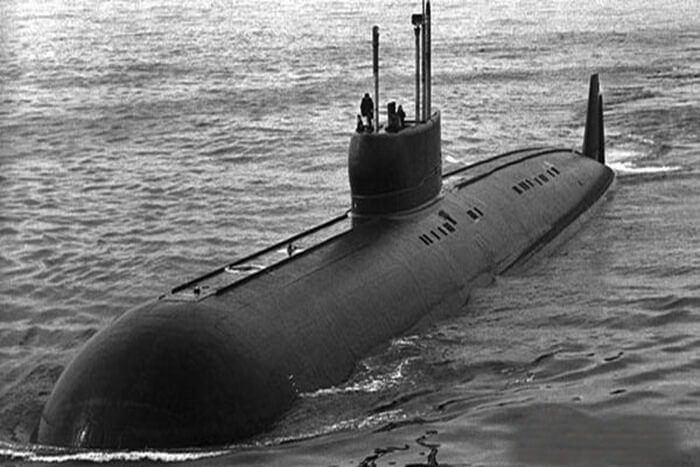 K-129 with a diesel engine and nuclear warheads sank on March 8, 1968 in the Pacific Ocean (near the Hawaiian Islands) together with a team of 96 to 98 submariners (data vary). The cause of the accident remained unsolved, but several theories were put forward, one of which was a collision with an unknown state ship.
K-129 with a diesel engine and nuclear warheads sank on March 8, 1968 in the Pacific Ocean (near the Hawaiian Islands) together with a team of 96 to 98 submariners (data vary). The cause of the accident remained unsolved, but several theories were put forward, one of which was a collision with an unknown state ship.
According to an official report by the US Navy, which was able to locate the K-129 in 1974, the tragic disaster that happened to the Soviet submarine was due to an onboard explosion. When the ship was lifted by the American Navy, the submarine broke into two parts, but some parts of the large nodes were delivered to one of the enemy's fleet locations. During their examination, the bodies of six Soviet sailors were taken out, who were later buried with all the honors by the Americans at sea.
6. "Scorpion" SSN-589, USA (1968)
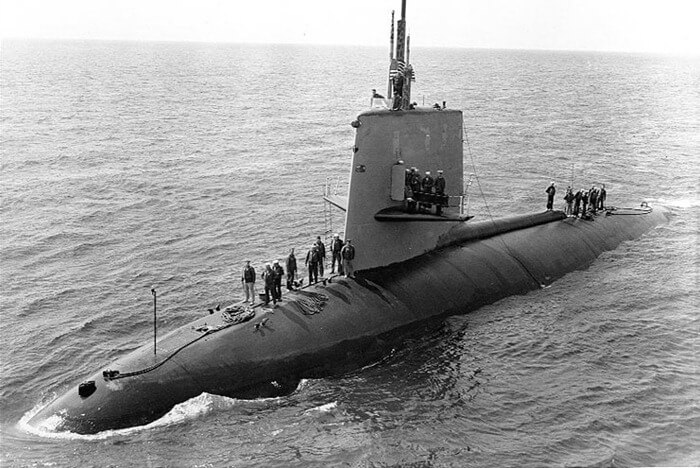 The US military lost its second nuclear submarine and 99 sailors on May 21, 1968 in the Atlantic, 740 km southwest of the Azores.The crew was supposed to return to base in 5 days, but fate decreed otherwise. Later, the wreck was searched in vain for about six months by forces of about 60 ships and 30 aircraft. Scorpion was soon found at a depth of about 3,000 meters using sonar.
The US military lost its second nuclear submarine and 99 sailors on May 21, 1968 in the Atlantic, 740 km southwest of the Azores.The crew was supposed to return to base in 5 days, but fate decreed otherwise. Later, the wreck was searched in vain for about six months by forces of about 60 ships and 30 aircraft. Scorpion was soon found at a depth of about 3,000 meters using sonar.
As often happens, the cause of the disaster has not yet been established. The most possible justification for the reasons was considered the detonation of the torpedo, but some experts saw in this a carefully concealed fact of the elimination of the "Scorpion" by the Soviet submarine fleet.
5. K-8 (project 627A "KIT"), USSR (1970)
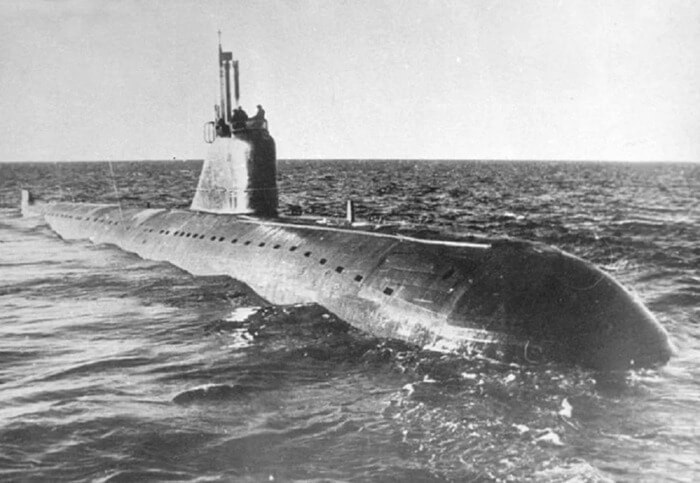 The first sad deprivation of the Soviet nuclear fleet was the crash of the K-8, along with all those on board (52 people). On April 12, 1970, while on patrol in the waters of the Mediterranean Sea, the nuclear submarine was ordered to redeploy to the Bay of Biscay to participate in a large-scale exercise called Ocean-70.
The first sad deprivation of the Soviet nuclear fleet was the crash of the K-8, along with all those on board (52 people). On April 12, 1970, while on patrol in the waters of the Mediterranean Sea, the nuclear submarine was ordered to redeploy to the Bay of Biscay to participate in a large-scale exercise called Ocean-70.
The main task of the ship was to identify the forces of a potential enemy breaking through under water to the sea borders of the USSR. The nuclear ship sank before the start of training exercises scheduled for April 14, as a result of a fatal fire. K-8 "KIT" sank 500 km from Spain, losing longitudinal stability and, in general, buoyancy. By dying, the crew managed to neutralize the nuclear reactors.
4. K-278 "Komsomolets" (project 685 "Fin"), USSR (1989)
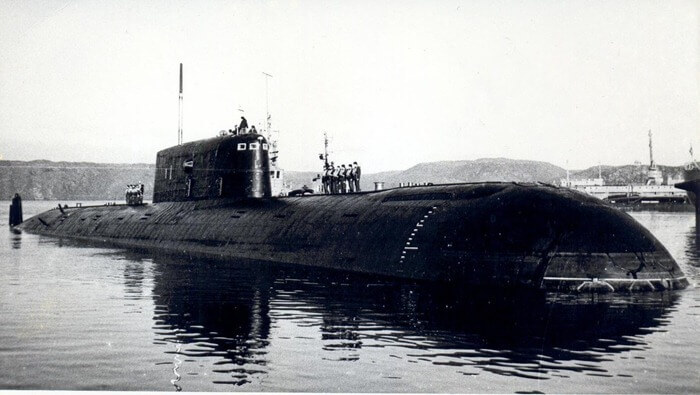 42 Soviet servicemen died a brave death (mainly from hypothermia), 27 team members escaped.
42 Soviet servicemen died a brave death (mainly from hypothermia), 27 team members escaped.
The nuclear submarine of the third generation, equipped with fast-loading torpedo tubes, at that time held the record for the depth of submersion under water among others - 1027 meters - a record was recorded in 1985. Despite its capabilities, the Komsomolets was killed and sank in the Norwegian Sea as a result of a fire in two adjacent compartments.
This happened on April 7, 1989, when the car was moving at a speed of 14.8 km / h (8 knots) at a shallow depth of 380 meters for itself. As a result of the emergency, the systems of the tanks of the main ballast were struck, through which the submarine was filled with outboard water.
3. "Kursk" K-141 (project 949A "Antey"), RF (2000)
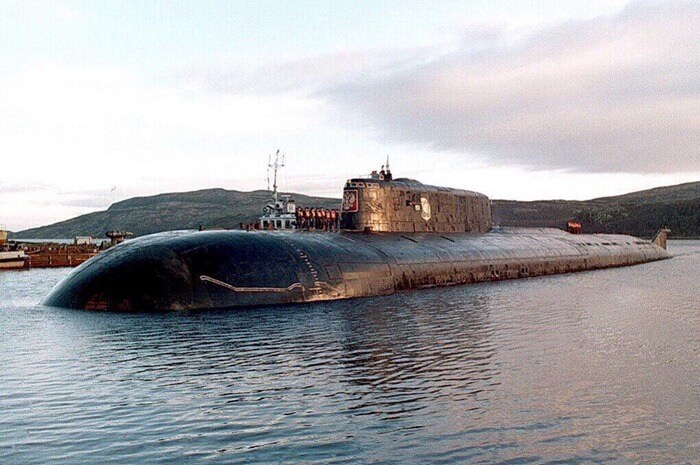 The service of the nuclear-powered missile-carrying submarine was tragically interrupted on August 12, 2000 during a tactical exercise in the Barents Sea at just over 100 meters. Due to the leakage of fuel from the engine of the torpedoes, two fatal explosions thundered, and most of the crew (of 118 people on board) died suddenly.
The service of the nuclear-powered missile-carrying submarine was tragically interrupted on August 12, 2000 during a tactical exercise in the Barents Sea at just over 100 meters. Due to the leakage of fuel from the engine of the torpedoes, two fatal explosions thundered, and most of the crew (of 118 people on board) died suddenly.
Twenty-three submariners were able to move into the undamaged compartment in the rear, where they waited for a long week for help. They died from a lack of oxygen, not waiting for the successful completion of the rescue operation, which unfolded in the water area between the Russian Federation and Norway. In terms of the number of deaths among submariners, this accident became one of the largest on nuclear submarines in the post-war period of the history of the Russian fleet. "She drowned" ... That is how V.V. Putin to the question of an American journalist, which worries everyone, "What happened to the Russian submarine Kursk?" live on CNN.
The process of raising the K-141 in several stages took place over 12 months by the forces of twenty states. The cost of the search and recovery operation at that time was estimated at hundreds of millions of dollars. After the excavation of the remains of the ship, one hundred and fifteen dead submariners were found and buried. The three sailors were never found. Potentially dangerous armament of the boat and reactors with nuclear fuel (2 pcs.) Were evacuated.
2. "Min 361", PRC (2003)
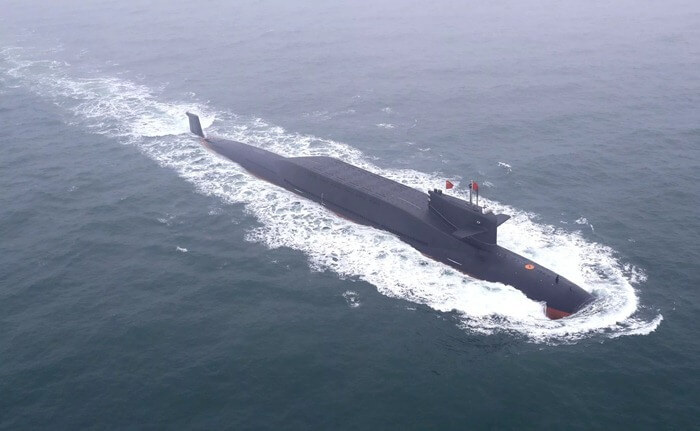 On April 16, 2003, at a regular naval exercise in Bohaiwan Bay (Yellow Sea, northeastern coast of China), an emergency situation occurred on the Ming 361 submarine - a diesel engine breakdown. The malfunction contributed to an early reduction in oxygen levels. The entire crew (70 people) subsequently lost their lives from strangulation.
On April 16, 2003, at a regular naval exercise in Bohaiwan Bay (Yellow Sea, northeastern coast of China), an emergency situation occurred on the Ming 361 submarine - a diesel engine breakdown. The malfunction contributed to an early reduction in oxygen levels. The entire crew (70 people) subsequently lost their lives from strangulation.
Then the Chinese authorities for the first time made public the fact of the catastrophe of the board of the submarine fleet. According to data released on May 2, 2003, the "Min 361" was found by local fishermen, who accidentally hooked on the periscope with their nets, on the 9th day after the tragic incident.
1. San Juan, Argentina (2017)
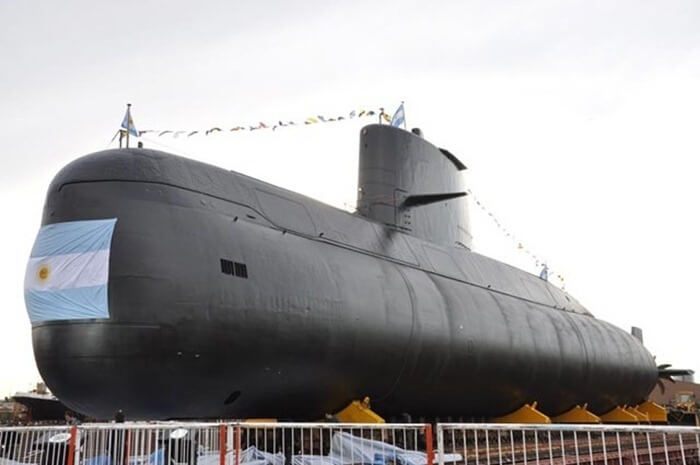 The captain of the San Juan stopped contacting on November 15, 2017, after complaining about power problems.Then the submarine with a crew of 44 people was on the transition from the naval base in Mar del Plata, 1400 km from the capital of Argentina. A day later, it was not possible to establish contact with them. Almost 2 weeks after the loss of the boat, it was reported that the operation to rescue the sailors was terminated, since the oxygen reserves, according to calculations, could only last for a week.
The captain of the San Juan stopped contacting on November 15, 2017, after complaining about power problems.Then the submarine with a crew of 44 people was on the transition from the naval base in Mar del Plata, 1400 km from the capital of Argentina. A day later, it was not possible to establish contact with them. Almost 2 weeks after the loss of the boat, it was reported that the operation to rescue the sailors was terminated, since the oxygen reserves, according to calculations, could only last for a week.
A submarine of the Argentine Navy was found using sonars only in November 2018, a year after disappearing, at the bottom of the ocean. The reasons for the emergency became known the other day, from the report of the German company, the manufacturer of the sunken submarine. Experts believe that the flooding of the compartments began through a valve in the battery compartments. This led to a short circuit, and, accordingly, to an explosion.
The commander of the missing Argentine nuclear submarine "San Juan", before training for the last campaign, promised his mother that this would be the last exit to the sea ...

